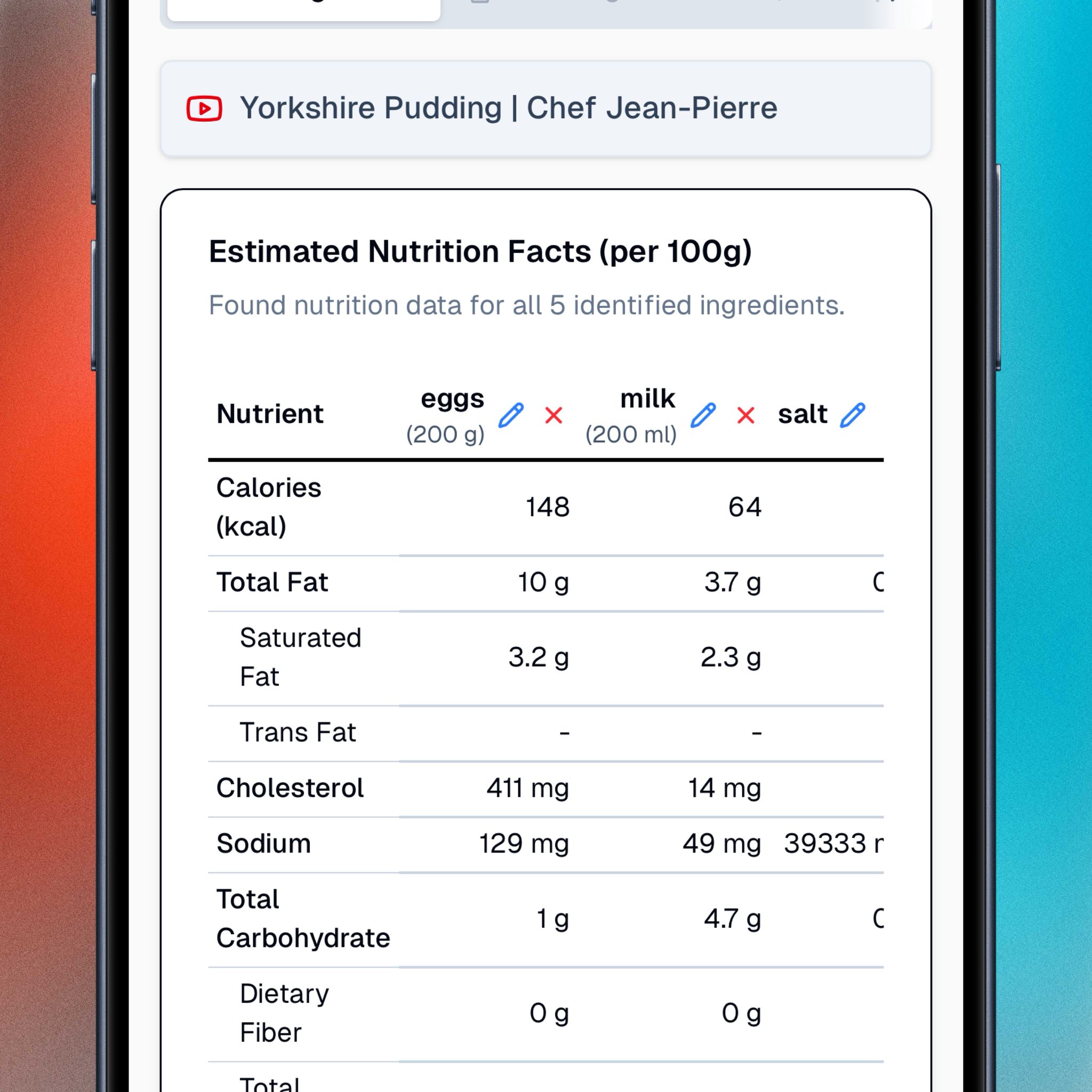Calories vs. Kilojoules: What's the Difference and Why It Matters

Have you ever looked at a food label on an imported snack or an international recipe website and seen the energy value listed as "kJ" instead of the familiar "Calories"? It can be confusing, but the good news is, it's simpler than you think. Both calories and kilojoules measure the exact same thing: energy.
Understanding this difference is a key part of learning to understand food labels effectively. At Recp.ai, our goal is to make nutrition simple. This guide will demystify these two units and show you how our food energy calculator takes care of the complexity for you.
What Are Calories and Kilojoules? A Simple Analogy
Think of calories and kilojoules like miles and kilometers. Both measure distance, but they use different scales. If you're planning a road trip, you need to know which unit you're working with, but the actual distance remains the same.
In the world of nutrition, it's the same concept:
- Calories (kcal): A calorie is a unit of energy. In the context of food, what we commonly call a "calorie" is technically a kilocalorie, which is why you'll often see it written as kcal. It's the amount of energy needed to raise the temperature of 1 kilogram of water by 1 degree Celsius. This is the most common unit used in the United States.
- Kilojoules (kJ): A kilojoule is the metric unit for measuring energy. It's part of the International System of Units (SI) and is widely used in countries like Australia, New Zealand, and across Europe.
So, when you see calories or kilojoules on a nutrition label, you're just seeing the food's energy value expressed in a different "language".
The Key Conversion: How to Switch Between Them
You don't need to be a math whiz to convert between the two. There's one simple conversion factor to remember:
- To convert calories to kilojoules: Multiply by 4.184
- Example: A snack with 200 kcal has
200 * 4.184 = 836.8 kJ.
- Example: A snack with 200 kcal has
- To convert kilojoules to calories: Divide by 4.184
- Example: A drink with 630 kJ has
630 / 4.184 = 150.5 kcal.
- Example: A drink with 630 kJ has
For quick mental math, you can simply multiply or divide by roughly 4.2.
The Recp.ai Advantage: Consistency and Simplicity
The reason you encounter both units is purely geographical. As our world becomes more connected, you'll increasingly find recipes from other countries that use kilojoules. This can make it tricky to use a standard food calorie calculator if you're constantly having to stop and do conversions.
This is where Recp.ai makes your life easier. We built our nutrition facts calculator to handle this complexity for you, so you never have to worry about it.
Here’s what happens behind the scenes:
- When you submit a recipe, our system taps into the vast USDA food database, which sometimes lists energy values in kilojoules (kJ).
- If our tool finds an energy value in kJ, it automatically converts it to Calories (kcal) for you.
- The final result you see is always displayed in Calories (kcal)—the unit you're most familiar with.
You don't need to know if the original recipe was from the US, Australia, or the UK. Recp.ai does the silent translation work, giving you one consistent, easy-to-understand energy number every single time.

Focus on Your Food, Not the Math
Ultimately, whether a label says 418 kJ or 100 kcal, the energy it provides your body is the same. The most important thing is having a consistent and clear understanding of your total energy intake.
Recp.ai eliminates the confusion by standardizing all energy values, allowing you to compare recipes, track your intake, and make informed decisions with confidence.
Ready to see how easy it is? Analyze Your First Recipe Now.
For a complete overview of all our features, check out our Comprehensive User Guide.
